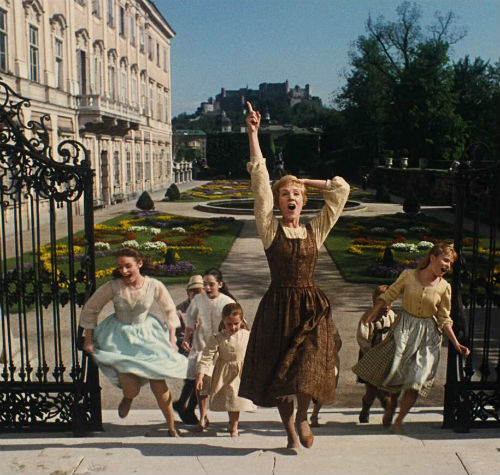Videos by American Songwriter
Back in May, I was giving a talk to the San Diego Songwriters Meetup Group when someone posed an interesting question: “What notes are good for ending a song?”
Experienced songwriters will answer that one in a flash: “Any!” They know that all seven tones of the major scale (Do-Re-Mi-Fa-Sol-La-Ti) make up a vocabulary of musical punctuation marks – not just for ending, but for beginning a melody. If you want to know how to use them, too, you must sensitize your ears to their mood, a feeling that hinges largely on their restfulness or restlessness. In the key of “C,” for example, “C” is most restful. All other tones have an itch to go somewhere, a unique itch for each tone.
To illustrate how all this works, we’ll call on a little help from our friends, Sgt. Pepper’s Lonely Hearts Club Band. (Play the examples on YouTube, or better, consult Hal Leonard’s The Beatles, Paperback Songs).
Restful Tones – Do, Mi, Sol
The tones of the tonic chord – Do, Mi, Sol – often appear at the beginnings and endings of songs or phrases. At the beginning, they announce the key. At the end, they announce a conclusion. Here they are, in all their moody glory:
Do: Supremely restful. Calm, peaceful, tranquil, final, complete, happy, majestic.
Mi: Sensitive, tender, emotional, affectionate, adoring, sensual. The proof is that lowering Mi a half step completely alters the emotional color of the scale and tonic chord from happy to sad. Play E major and then E minor to hear the difference.
Sol: Restful, yet bursting with life. When harmonized with the dominant chord (G or G7 in C), Sol sounds bold, spirited, hopeful, or ecstatic. When harmonized with the tonic chord, its vibrancy becomes faith, pride, or an assertive promise to break free.
Restless Tones – La, Re, Fa, Ti
Where do restless scale tones want to go? To the nearest tone of the tonic chord. While they can be found anywhere, their most important role is at the end of a phrase, where they form a musical comma or question mark. Here are the champions of discord, from least to most itchy:
La: Joyous, ecstatic, colorful, tropical, sensual. La’s strong attraction to “Sol” often leads to “Sol-La-Sol” or “Do-La-Sol” in melodies.
Re: Suspenseful, floating, poised for action, wistful, vague, misty, airy. “Re” is pulled equally two ways by “Do” and “Mi,” the root and 3rd of the tonic chord.
Fa: Yielding, devoted, affectionate, submissive, faithful. Fa is strong as a chord root, but as a melody note it tends to fall submissively a half step to Mi, the 3rd of the tonic chord.
Ti: Yearning, unfulfilled, lustful, ecstatic on the verge of release. Wants to go up a half step to “Do.” All other tension tones want to fall, which makes Ti the only gravity-defying tone. Think “Some-where O-ver the Rain-bow.” That “O” (Ti) is a tearjerker.
Seven Ways to Begin a Song
Do: Often begins a song, as in “Do, a deer, a female deer,” from The Sound Of Music. See “Blackbird,” “Please Please Me,” or “Sgt. Pepper’s Lonely Hearts Club Band.”
Re: Rare as a starter, but interesting. See “All My Loving” (on “Close your eyes”), “Blackbird” (on “All your life …” and four other places in the line), “Hello, Goodbye” (on “You say”), and “Yesterday” on “Yes-ter-day.
Mi: Warm. See “Don’t Let Me Down,” “Here Comes The Sun,” or “Martha My Dear.”
Fa: Usually yields immediately to “Mi.” See “All My Loving,” “Back In The U.S.S.R.,” or “Love Me Do” (instrumental).
Sol: Promising. See “Get Back,” “Revolution,” “Here, There, And Everywhere”
La: Exuberant. Check “Help!”, “I Want To Hold Your Hand” (Sol-La-Sol on “Oh yeah, I’ll”), “Norwegian Wood” (Sol-La-Sol on “I once had”), “Oh, Darling” (on “Oh”)
Ti: Uncommon. However, check “Baby You’re A Rich Man” on “How does it feel,” “I Will” (on “Who knows”), “Lovely Rita” (on “Love–ly Ri–ta”)
Seven Ways to End a Song (or Phrase)
Do: Super-conclusive, like a period. See the final notes of “All My Loving” or “Rain.”
Re: A musical comma or question mark. See “Eight Days A Week” on “Eight Days A Week” in the chorus (just before “I love you.”), or “Got To Get You Into My Life” (on “find” or “mind”)
Mi: Tenderly conclusive. See “Paperback Writer” at the “Repeat and fade,” where “Mi” sounds wittily ironic.
Fa: Uncommon as a final tone, but sometimes occurs at the end of a phrase in the middle of a song, particular as part of a sequence (a pattern of notes repeated on different scale steps). See the second “Yes, we’re goin’ to a par-ty, par-ty” in “Birthday,” which ends on “D,” or “Fa” in the key of A
Sol: Conclusive, but still portending further action. “Sgt. Pepper’s Lonely Hearts Club Band,” “Ticket To Ride” (on “sad,” “today,” and “away”)
La: Sweetly sensual. Rare as a phrase ending, but often used as a temporary resting point midway. “Here, There And Everywhere” (“La-Sol” on “of the year”), “I Should Have Known Better” (on “with a girl like you”)
Ti: The ultimate rogue tone. A musical question mark. “Across the Universe” on “U-ni-verse,” “Come Together” on “Hair down to his knee…”
Years ago, I walked into a grocery store and something coming over the music system overhead stopped me in my tracks. It was a song, and clear as a bell, I could hear the singing syllables – “Do-Re-Mi” – superimposed on every note. The accompanying e-book for this column describes how you, too, can acquire this ability. It also fills out the study of scale tones in Beatles songs and discusses the role of the five “black key” tones in any given key.

